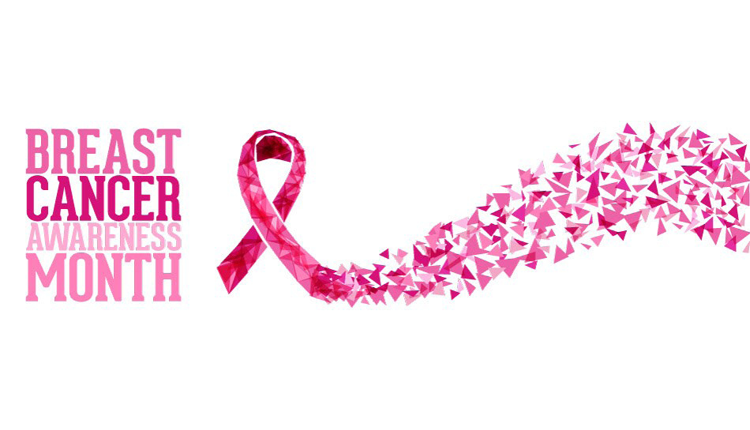Breast Cancer Awareness Month

By Angela Hickey
As we continue through the month of October, there are many things to mark on the calendar. With the excitement of Halloween just around the corner, people often overlook some of the horrors of the real world and forget that October is Breast Cancer Awareness Month. Breast Cancer Awareness Month raises some pressing questions, such as what exactly is breast cancer? And how do I know if I have it or not?
Breast cancer is caused by the clumping of malignant cells formed in the breasts. Breast cancer is the most common cancer diagnosis in the United States after skin cancer and can occur in both men and women.
According to The Breast Cancer Research and Assistance Fund, one in every eight women in the United States, or about 12.6% of all women, will be diagnosed with breast cancer in her lifetime. Breast cancer is the leading cause of cancer-related deaths among U.S. women aged 35-44, and research shows that delayed diagnosis and more aggressive tumors result in higher mortality rates in young women.
Early detection of breast cancer is invaluable to diagnosis, treatment, and survival rate. Signs of breast cancer may include a lump in the breast, a change in breast shape, dimpling of the skin, fluid from the nipple, a newly-inverted nipple, and a red or scaly patch of skin. Some outcomes of cancer depend on the severity of the diagnosis, the cancer type, the extent of the disease, and the patient’s age.
Breast self-examination, or regularly examining your breasts on your own, can be an important way to find breast cancer early No single test can detect breast cancer early, but performing a breast self-exam, in combination with other screening methods, can increase the odds of early detection.
There are five steps one can take in order to perform an at-home self-examination.
Step One: Begin by looking at your breasts in the mirror with your shoulders straight and your arms on your hips. Here’s what you should look for:
- Breasts that are their usual size, shape, and color
- Breasts that are evenly shaped without visible distortion or swelling
Step Two: Now, raise your arms and look for the same changes.
Step Three: While you’re looking in the mirror, look for any signs of fluid coming out of one or both nipples (this could be a watery, milky, or yellow fluid or blood).
Step Four: Next, feel your breasts while lying down, using your right hand to feel your left breast and then your left hand to feel your right breast. Use a firm, smooth touch with the first few finger pads of your hand, keeping the fingers flat and together. Use a circular motion, covering an area of about the size of a quarter at a time.
Cover the entire breast from top to bottom, side to side — from your collarbone to the top of your abdomen, and from your armpit to your cleavage.
Follow a pattern to be sure that you cover the whole breast. Be sure to feel all the tissue from the front to the back of your breasts: for the skin and tissue just beneath, use light pressure; use medium pressure for tissue in the middle of your breasts; use firm pressure for the deep tissue in the back. When you’ve reached the deep tissue, you should be able to feel down to your ribcage.
Step Five: Finally, feel your breasts while you are standing or sitting. Many women find that the easiest way to feel their breasts is when their skin is wet and slippery, so they like to do this step in the shower. Cover your entire breast, using the same hand movements described in step 4.








